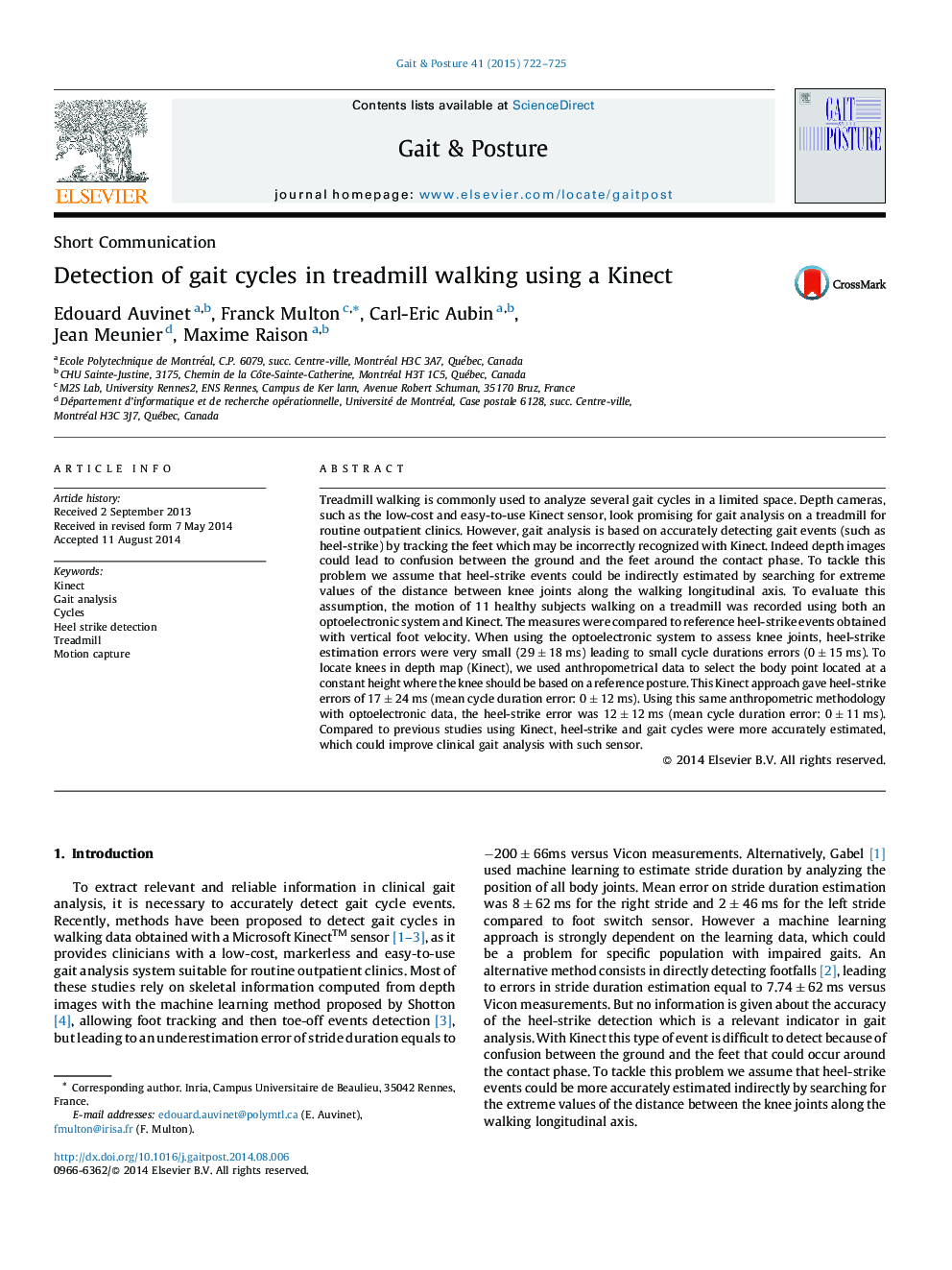| کد مقاله | کد نشریه | سال انتشار | مقاله انگلیسی | نسخه تمام متن |
|---|---|---|---|---|
| 6206211 | 1265640 | 2015 | 4 صفحه PDF | دانلود رایگان |

- Heel strikes were detected with the maximum longitudinal distance between the knees.
- This distance was estimated with depth images from Kinect without using a skeleton.
- The error for heel strike events estimation with Kinect information was 17 ± 24 ms.
- The error for step duration estimation with Kinect information was 0 ± 12 ms.
Treadmill walking is commonly used to analyze several gait cycles in a limited space. Depth cameras, such as the low-cost and easy-to-use Kinect sensor, look promising for gait analysis on a treadmill for routine outpatient clinics. However, gait analysis is based on accurately detecting gait events (such as heel-strike) by tracking the feet which may be incorrectly recognized with Kinect. Indeed depth images could lead to confusion between the ground and the feet around the contact phase. To tackle this problem we assume that heel-strike events could be indirectly estimated by searching for extreme values of the distance between knee joints along the walking longitudinal axis. To evaluate this assumption, the motion of 11 healthy subjects walking on a treadmill was recorded using both an optoelectronic system and Kinect. The measures were compared to reference heel-strike events obtained with vertical foot velocity. When using the optoelectronic system to assess knee joints, heel-strike estimation errors were very small (29 ± 18 ms) leading to small cycle durations errors (0 ± 15 ms). To locate knees in depth map (Kinect), we used anthropometrical data to select the body point located at a constant height where the knee should be based on a reference posture. This Kinect approach gave heel-strike errors of 17 ± 24 ms (mean cycle duration error: 0 ± 12 ms). Using this same anthropometric methodology with optoelectronic data, the heel-strike error was 12 ± 12 ms (mean cycle duration error: 0 ± 11 ms). Compared to previous studies using Kinect, heel-strike and gait cycles were more accurately estimated, which could improve clinical gait analysis with such sensor.
Journal: Gait & Posture - Volume 41, Issue 2, February 2015, Pages 722-725